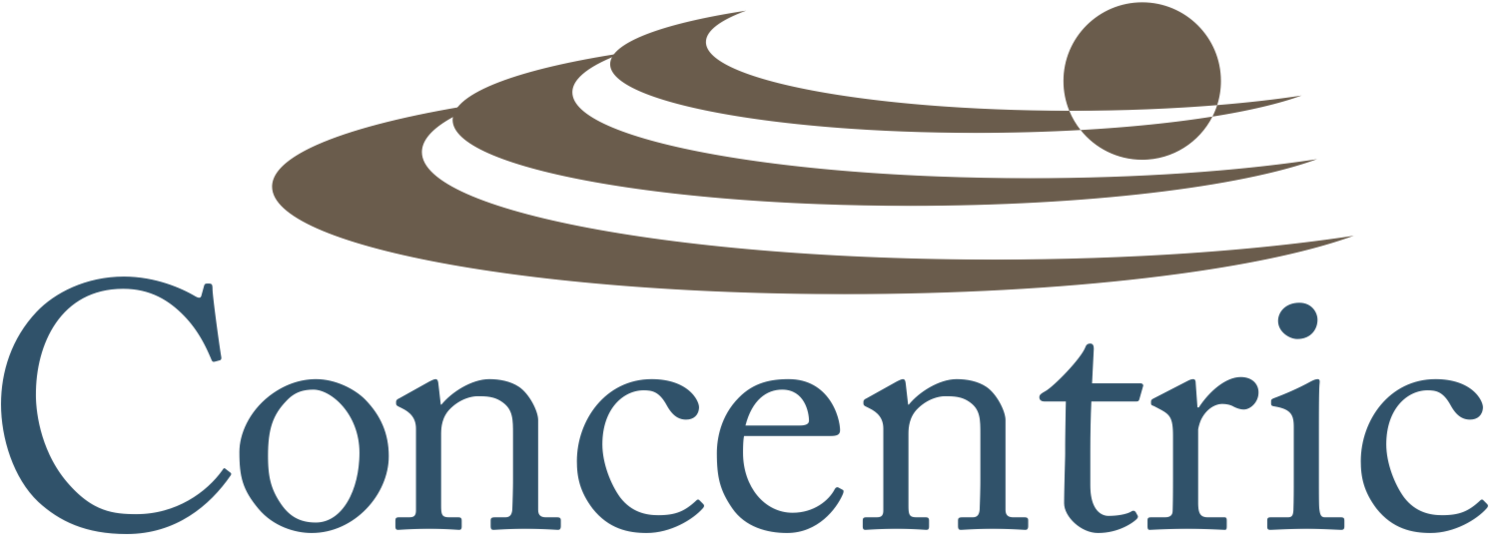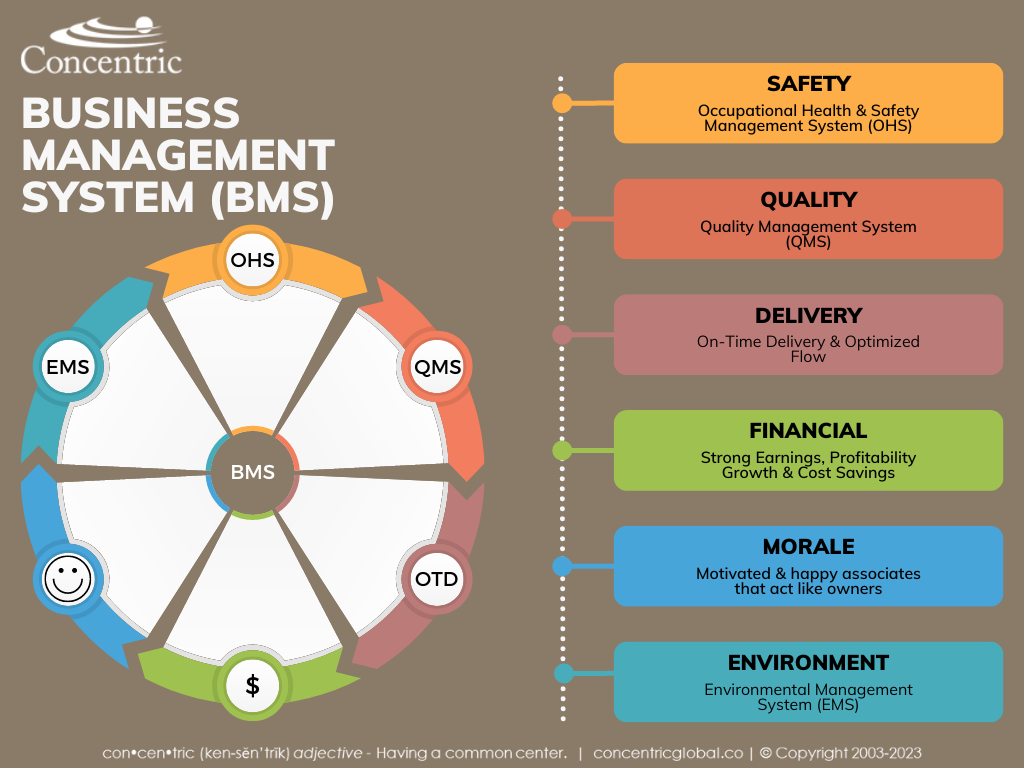6 Types of Management Systems and Why You Should Care
I’ve spent the majority of my career designing, building, assessing and improving something that most people know nothing about. In fact, my grown kids still frequently ask “What do you do again?” The most accurate answer doesn’t help much. Sometimes I’ll simply answer with “I help companies get better”. Other times I try harder to add context through answering “I teach business leaders how to develop systems…” as they tune out, with a glossy look in their eyes.
The subject of my work is ambiguous yet used by every organization in the world. This subject has no shape, size, smell or feel, yet it is a foundation for how every business and it’s processes operate. It separates the best in the market from the worst, is a major element between business owners who are successful and those who fail, yet is hard to find on the internet. The subject at hand is a “management system”.
The answer to “What is your occupation?” can most accurately be summed up as a “Management System Architect,” but no one knows what that means.
This blog, as well as a series of blogs planned in the coming months, will help clarify this mysterious subject matter of management systems. Through our blogs, consulting and various resources pages, we hope to bring awareness and understanding to the importance of management systems.
What is a management system?
A management system is a structured approach that organizations use to manage their processes, resources, and activities effectively and efficiently. It provides a framework for planning, implementing, monitoring, and improving processes to achieve organizational objectives.
A management system typically includes policies, procedures, processes, standards, guidelines, and tools that help an organization manage its operations, resources, and stakeholders. Some common types of management systems include:
Quality management system (QMS): A QMS is a system that an organization uses to ensure that its products or services meet customer requirements and quality standards.
Environmental management system (EMS): An EMS is a system that an organization uses to manage its environmental impact, comply with environmental regulations, and improve its sustainability performance.
Occupational health and safety management system (OHSMS): An OHSMS is a system that an organization uses to manage its health and safety risks and comply with occupational health and safety regulations. Note: OHSMS is frequently shortened to OHS or OH&S.
Integrated management system (IMS): An integrated management system (IMS) is a management approach that combines multiple management systems into a single, unified system. Note: Sometimes systems are designated as HSE which is an indication of a combined Health, Safety & Environmental Management.
By implementing a management system, an organization can improve its performance, increase efficiency, reduce risks, and demonstrate compliance with relevant standards and regulations.
What is a business management system?
A business management system (BMS) is a set of tools, processes, and technologies that a company uses to organize, manage, and track its operations, resources, and activities.
A BMS can include various elements such as software applications, data storage, communication systems, and reporting tools, all of which are designed to support different areas of business operations, such as finance, human resources, marketing, sales, supply chain management, and customer service.
The main goal of a BMS is to streamline business processes, increase efficiency, reduce costs, and improve decision-making by providing real-time information and insights about the company's performance. By having a centralized system for managing different aspects of the business, BMS can also improve collaboration and communication among different departments and stakeholders, leading to better coordination and alignment of business objectives.
How is a management system different than a business management system?
The terms "management system" and "business management system" are often used interchangeably, but there are a few differences between them.
A management system is a broad term that refers to a structured approach that an organization uses to manage its processes, resources, and activities effectively and efficiently. It can include various types of management systems, such as a QMS, EMS, OHS or some of the new kids on the block - information security management systems, energy management systems and hundreds of others.
On the other hand, a business management system is a specific type of management system that focuses on managing a business's overall operations, including its strategy, planning, marketing, finance, human resources, and other functional areas. It is designed to help the organization achieve its goals, meet its stakeholders' expectations, and remain competitive in the market.
In other words, while a management system can refer to any system that helps an organization manage its processes and resources, a business management system specifically focuses on managing the overall operations of a business.
What is a quality management system?
A quality management system (QMS) is a framework that organizations use to manage and improve the quality of their products or services. It encompasses all the activities, processes, and procedures an organization undertakes to ensure that its products or services meet the requirements and expectations of its customers and stakeholders.
A QMS typically includes the following elements:
Quality Policy: A statement of the organization's commitment to quality and the goals and objectives for achieving it.
Quality Manual: A document that outlines the organization's quality management system, including its policies, procedures, and responsibilities.
Quality Objectives: Specific, measurable targets that the organization sets to achieve its quality policy.
Quality Procedures: Detailed instructions that describe how specific tasks or activities should be carried out to ensure consistency and quality.
Quality Records: Documentation that provides evidence of the effectiveness of the QMS, such as audit reports, corrective action reports, and customer feedback.
Training and Competence: Ensuring that employees have the necessary skills and knowledge to perform their duties effectively and to maintain the quality of the products or services.
Continuous Improvement (CI): A systematic approach to identifying and addressing opportunities for improvement in the QMS, including regular reviews and audits.
Implementing a QMS can help organizations to improve their processes, reduce costs, and enhance customer satisfaction. It can also help to demonstrate the organization's commitment to quality and provide a framework for achieving regulatory compliance and certification.
What is an environmental management system?
An environmental management system (EMS) is a framework that organizations use to manage and reduce their environmental impact. It is a systematic approach to identifying, managing, and mitigating the environmental risks and impacts associated with an organization's operations, products, and services. An EMS is typically designed to be compatible with the ISO 14001 standard, which provides a framework for the development and implementation of an EMS.
An EMS typically includes the following key elements:
Environmental Policy: A statement of the organization's commitment to environmental management and the goals and objectives for achieving it.
Environmental Planning: A systematic process for identifying the organization's environmental impacts and risks, setting objectives and targets for improvement, and developing plans for achieving them.
Implementation and Operation: The processes and procedures for implementing the EMS, including training, communication, and documentation.
Evaluation and Corrective Action: The monitoring and measurement of the organization's environmental performance, and the processes for taking corrective action to address any identified issues or non-conformities.
Management Review: A periodic review of the EMS to ensure its continued effectiveness and to identify opportunities for improvement.
Implementing an EMS can help organizations to reduce their environmental impacts, enhance their environmental performance, and comply with environmental regulations and laws. It can also help to reduce costs and improve efficiency by identifying opportunities to reduce waste, conserve resources, and improve processes.
In addition, an EMS can demonstrate an organization's commitment to sustainability and corporate social responsibility, which can be important for building trust and credibility with stakeholders and customers.
What is an occupational health and safety management system?
An occupational health and safety management system (OHSMS) is a framework that organizations use to manage and improve their occupational health and safety (OHS) performance. It is a systematic approach to identifying, managing, and mitigating the health and safety risks associated with an organization's operations, products, and services. An OHSMS is typically designed to be compatible with the ISO 45001 standard, which provides a framework for the development and implementation of an OHSMS.
An OHSMS typically includes the following key elements:
OHS Policy: A statement of the organization's commitment to OHS management and the goals and objectives for achieving it.
OHS Planning: A systematic process for identifying the organization's OHS risks and hazards, setting objectives and targets for improvement, and developing plans for achieving them.
Implementation and Operation: The processes and procedures for implementing the OHSMS, including training, communication, and documentation.
Evaluation and Corrective Action: The monitoring and measurement of the organization's OHS performance, and the processes for taking corrective action to address any identified issues or non-conformities.
Management Review: A periodic review of the OHSMS to ensure its continued effectiveness and to identify opportunities for improvement.
Implementing an OHSMS can help organizations to prevent workplace injuries and illnesses, protect their employees from harm, and comply with OHS laws and regulations. It can also help to reduce costs and improve efficiency by identifying opportunities to improve work processes and reduce the frequency and severity of workplace accidents and injuries.
In addition, an OHSMS can demonstrate an organization's commitment to the health and safety of its employees, which can be important for building trust and credibility with stakeholders and customers.
What is an integrated management system?
An integrated management system (IMS) is a management approach that combines multiple management systems into a single, unified system. An IMS typically integrates two or more of the following management systems: quality management, environmental management, occupational health and safety management, energy management, and information security management, etc. We consider an IMS that is applied to a company to be the same as a BMS.
The purpose of an IMS is to streamline the management of different aspects of an organization by integrating the various management systems into a cohesive and coordinated system. This approach can provide a number of benefits, including improved efficiency, reduced duplication of effort, increased effectiveness, better communication and coordination, and cost savings.
For example, an organization might integrate its quality management system with its environmental management system to improve its overall environmental performance, while also reducing costs and increasing efficiency. By integrating these systems, the organization can eliminate duplication of effort and better coordinate its efforts to improve the environmental impact of its operations while still maintaining its quality standards.
The IMS approach also makes it easier to manage multiple standards and certifications simultaneously, as it provides a single framework for managing all the different requirements of the various standards.
Implementing an IMS can be complex and requires careful planning and execution, but it can lead to significant benefits for organizations that are committed to improving their management systems and reducing costs.


